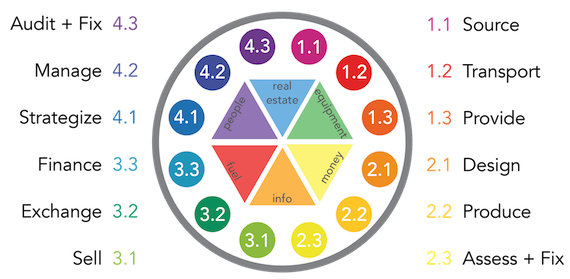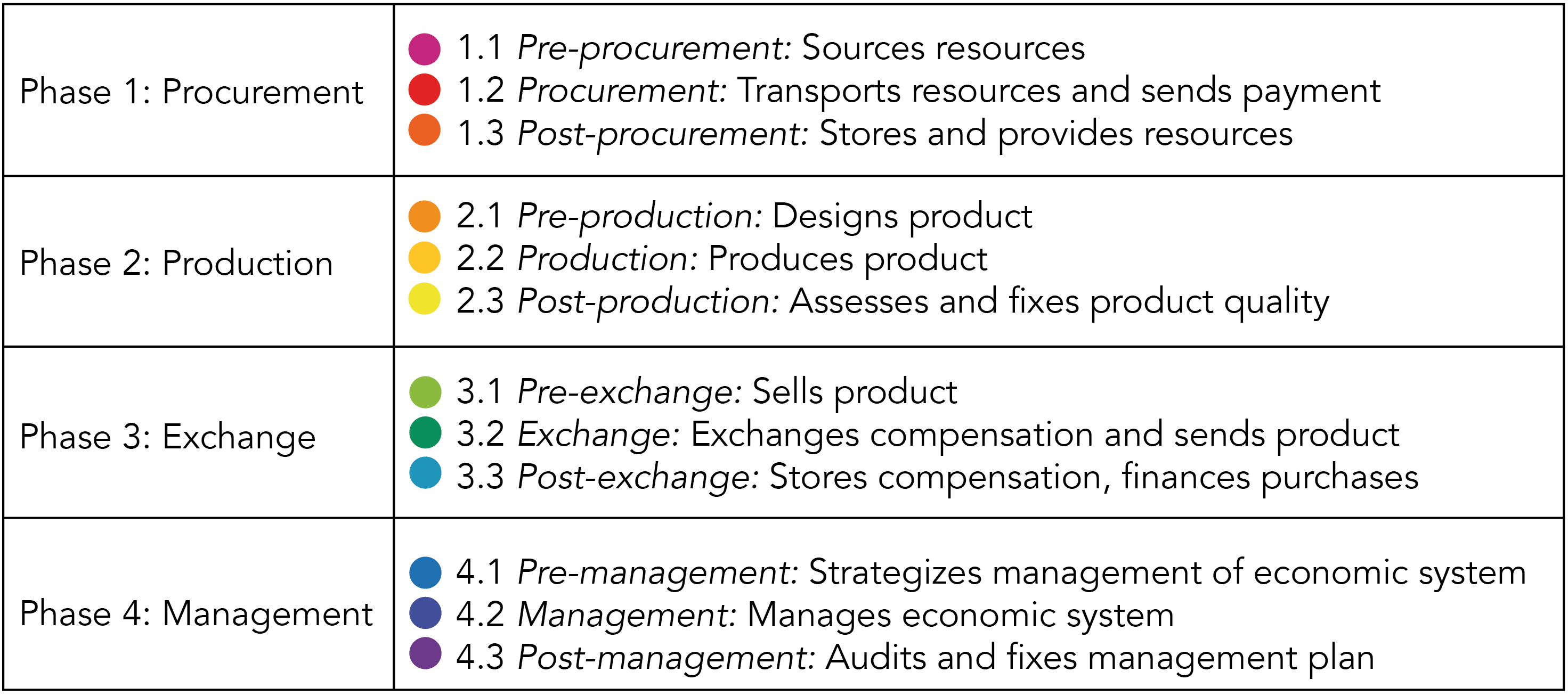Locus Analytics®
The Locus Model™ is a systems approach to identifying the components of every economic entity, whether it be a job, business, government, or community. The Locus Model comprises a series of coordinate-based functional locations onto which all economic activity and resources can be mapped.
The Locus Model: The Foundation of Functional Maps®
The Locus Model is a systems model of the functional activities and resources associated with producing or providing a given product. All systems models are built on basic representations of an underlying structure that identify and relate the system’s component parts. Each part has a specific functional role in the operation of the whole. This is true of human anatomical models, architectural plans for a building, and engineering plans for a car. Each model represents familiar sequences and structures, detailing the functional elements that form functional wholes.
The central claim of the Locus Model is that a single system, regardless of its scale or product, is composed of a set of resources that performs a sequence of activities to produce a product. Every butcher, banker, school, and insurance brokerage—any “economic system,” as Locus calls product-producers—can be modeled this way because every component of an economic system is given a location in the Model.
Below is a representation of a single system composed of resources (triangles) and activities (circles).

The Locus model distinguishes between the resources that economic systems have and the activities that economic systems perform. Below, we provide background on how the resources and activities are represented by the Locus Model.
Functional Maps® based on the Locus Model power software applications in financial analysis as well as data classification, research, analytics and management. They enable the integration of financial and economic data with data and methods from other disciplines including biological data, using novel logical data models to inform financial, commercial and policy decisions
Explore Resources
Economic systems are made up of resources that are used together to perform the systems’ activities. Within every system, these resources fall into two resource families: the structural resources that do the work and enabling resources that support the work.
The resource categorization is a template for each activity; resources used by any activity fall into one of these functional categories. Additionally, the resource categorization provides a template for identifying and grouping the outputs of economic activity.

Explore Activities
Economic systems comprise a series of activities, captured by The Locus Model’s activity cycle. All economic systems purchase inputs, produce their product, exchange that product for compensation, and manage their assets and activities on an ongoing basis, allowing them to invest in more purchases; that is, they perform an activity cycle. The Locus Model partitions the activity cycle into individual functional activities so that economic systems can be mapped, related, and modeled in a standardized way. These partitions begin by breaking the activity cycle into four broad phases. Each of the four phases can be further split out into three sequential parts that describe the planning (pre-), performing (central), and reviewing (post-) aspects of the specific phase.
